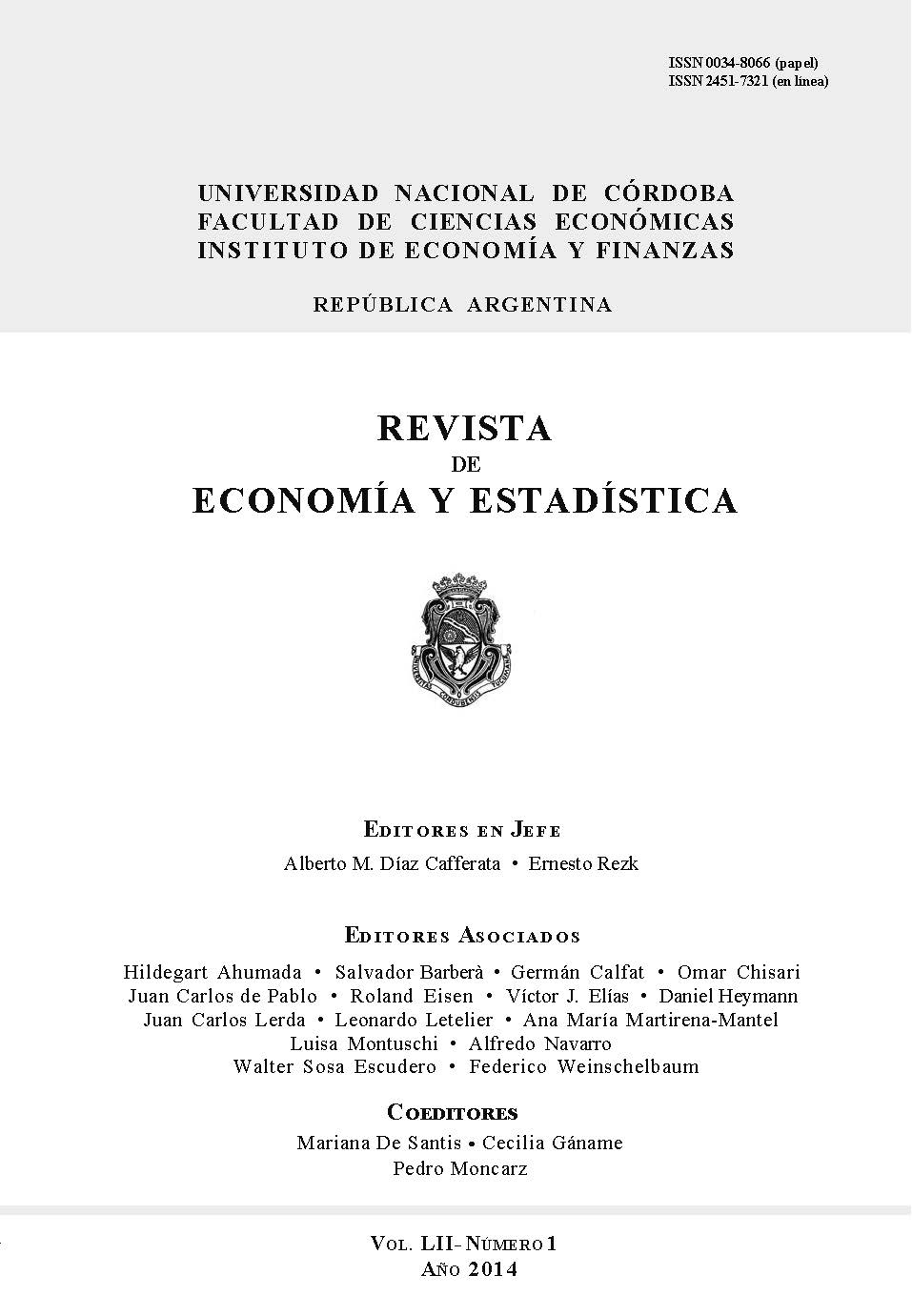Structural Real Exchange Rate and Unemployment Interdependencies in Argentina
DOI:
https://doi.org/10.55444/2451.7321.2014.v52.n1.14936Keywords:
structural real exchange rate, unemployment rate, factor productivity, capital endowments, terms of tradeAbstract
Based on a three-sector micro-founded model of a small open economy, this paper investigates the interdependences between the structural real exchange rate (defined as the relative prices tradable to non-tradable goods prices) and the unemployment rate with an application to Argentina. The empirical results suggest a significant, negative relationship between the structural real exchange rate and the rate of unemployment, suggesting that an appreciating real exchange rate may lead to Dutch disease effects – which effectively contract the size of the manufacturing sector – and damage long-term growth and employment opportunities.
Downloads
Downloads
Published
Issue
Section
License
Copyright (c) 2014 Eric J. Pentecost, Fernando Zarzosa Valdivia

This work is licensed under a Creative Commons Attribution-NonCommercial-NoDerivatives 4.0 International License.
Authors who have publications with this journal agree to the following terms:
Authors retain their copyright and grant the journal the right of first publication of their work, which is simultaneously subject to the Creative Commons Attribution-NonCommercial-NoDerivatives 4.0 International License that allows third parties to share the work provided that its author and first publication in this journal are indicated.
Authors may adopt other non-exclusive licensing arrangements for distribution of the published version of the work (e.g. depositing it in an institutional telematic archive or publishing it in a monographic volume) as long as the initial publication in this journal is indicated.
Authors are allowed and encouraged to disseminate their work via the Internet (e.g. in institutional telematic archives or on their website) before and during the submission process, which can lead to interesting exchanges and increase citations of the published work. (See The Open Access Effect)














